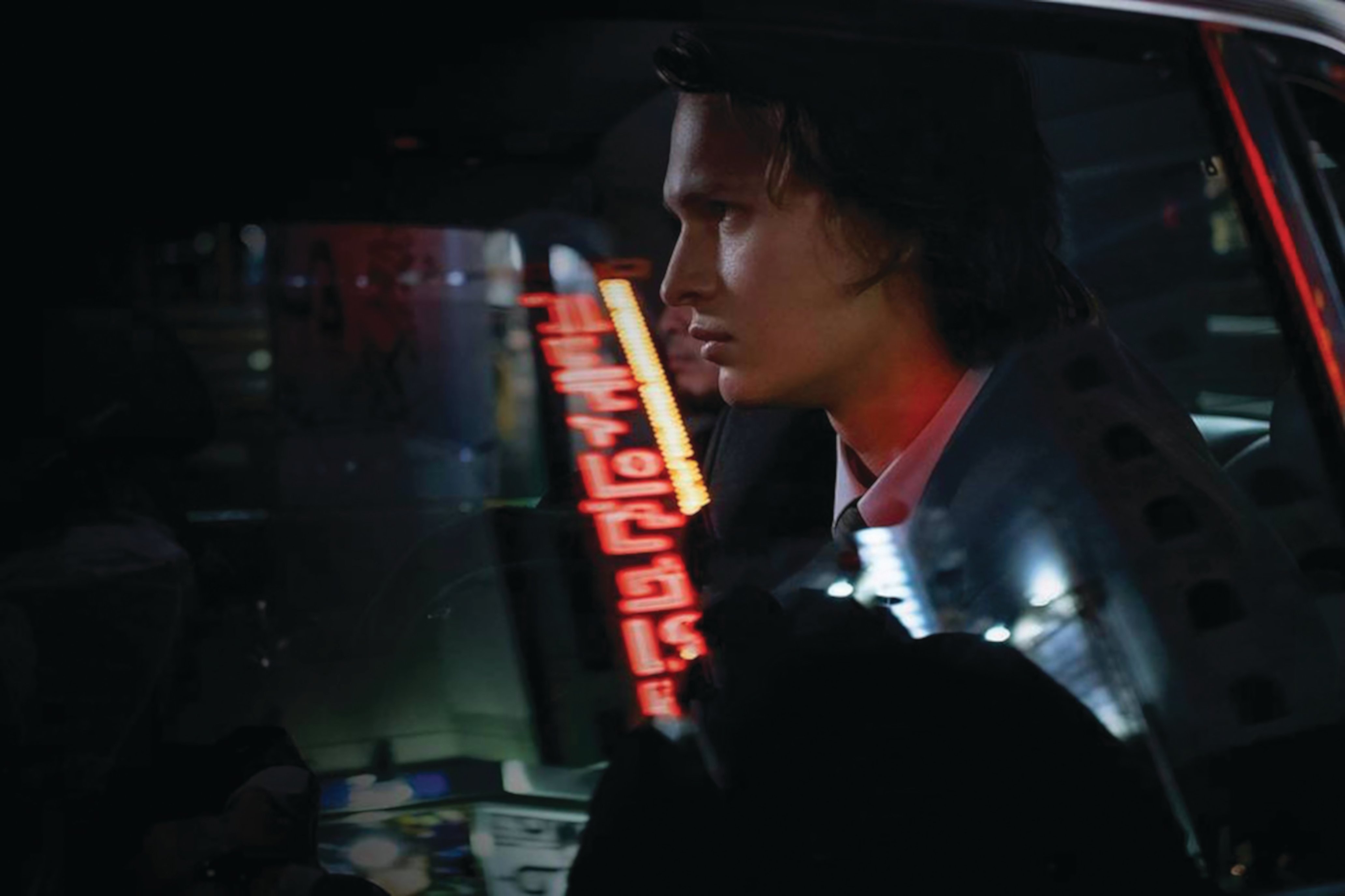
Signature Styles: Shooting Tokyo Vice, The Gilded Age and Slow Horses
Three cinematographers — John Grillo, Vanja Černjul, ASC, HFS and Danny Cohen — discuss creating looks for their latest episodic series.
The opportunity to shoot a television pilot is always exciting for cinematographers since it gives them — and their collaborators — a chance to create a look that will become a show’s signature throughout its run. Crafting this look helps to establish a distinct point of view and provide guidelines for the directors and other filmmakers who arrive at various points in the schedule to work on the production.
In the following pages, AC speaks with directors of photography about the signature styles they created for three new series. For the HBO Max crime drama Tokyo Vice (pictured above), cinematographer John Grillo employs kinetic camerawork to take viewers on a tour of Tokyo’s underbelly and to simultaneously convey the protagonist’s inner unease. In capturing the grandeur of 1880s New York City and its elites for HBO’s historical drama The Gilded Age, Vanja Černjul, ASC, HFS composes wide, epic shots that he dubs “master panoramas,” which help to delineate two distinct versions of New York: old and new. Danny Cohen, BSC also employs contrasting imagery in the Apple TV Plus spy thriller Slow Horses to establish character and place, and to highlight a dichotomy central to the show’s plot: spies who are particularly terrible at their jobs.
Tokyo Vice | Tokyo Underground
By Michael Kogge
When cinematographer John Grillo visited Tokyo in the early 1990s, the city reminded him of the Los Angeles depicted in Blade Runner, with its bright neon nighttime lights and its mixture of ultra-modern technology and ancient culture. However, for the pilot of the HBO Max series Tokyo Vice, director Michael Mann challenged Grillo to go beyond this now-common image of the city and capture a Tokyo that was grittier, rougher and less illuminated. Mann wanted to show the city’s unglamorous side and explore the spaces where ordinary people lived, worked, ate, and even killed — or, as Mann describes it, “the real Tokyo.”
Says Grillo, “Michael is the last director who would want to do postcard photography. He does not want to repeat the usual visual tropes. So, we didn't even think about doing the beauty shots of certain streets in Tokyo with all the lit signs. We wanted to get into the underground of the city.”
In the pilot, the camera becomes the vehicle that tours a version of Tokyo rarely portrayed on Western screens — moving, bobbing and weaving through scenes; seldom at rest; always curious and kinetic. “You feel the excitement of the camera showing you the place and showing you character,” Grillo says. “We achieved that with a combination of handheld work and Steadicam, as well as the P+S Skater Scope.”
Camera and character are closely linked in the pilot. The protagonist, American ex-pat Jake Adelstein (Ansel Elgort), joins the staff of a major Tokyo newspaper as a cub reporter and begins investigating a grisly murder and a dramatic self-immolation that takes him into the shadowy world of the Yakuza crime syndicate. The camera’s constant motion not only reveals Tokyo’s underbelly, but also reflects Jake’s inner turbulence and unease. Grillo believes this kineticism is fundamental to the look and feel of the show: “The signature style of Tokyo Vice is that the camera is so active in telling a story [that] the lighting isn’t necessarily the [most important] thing.”
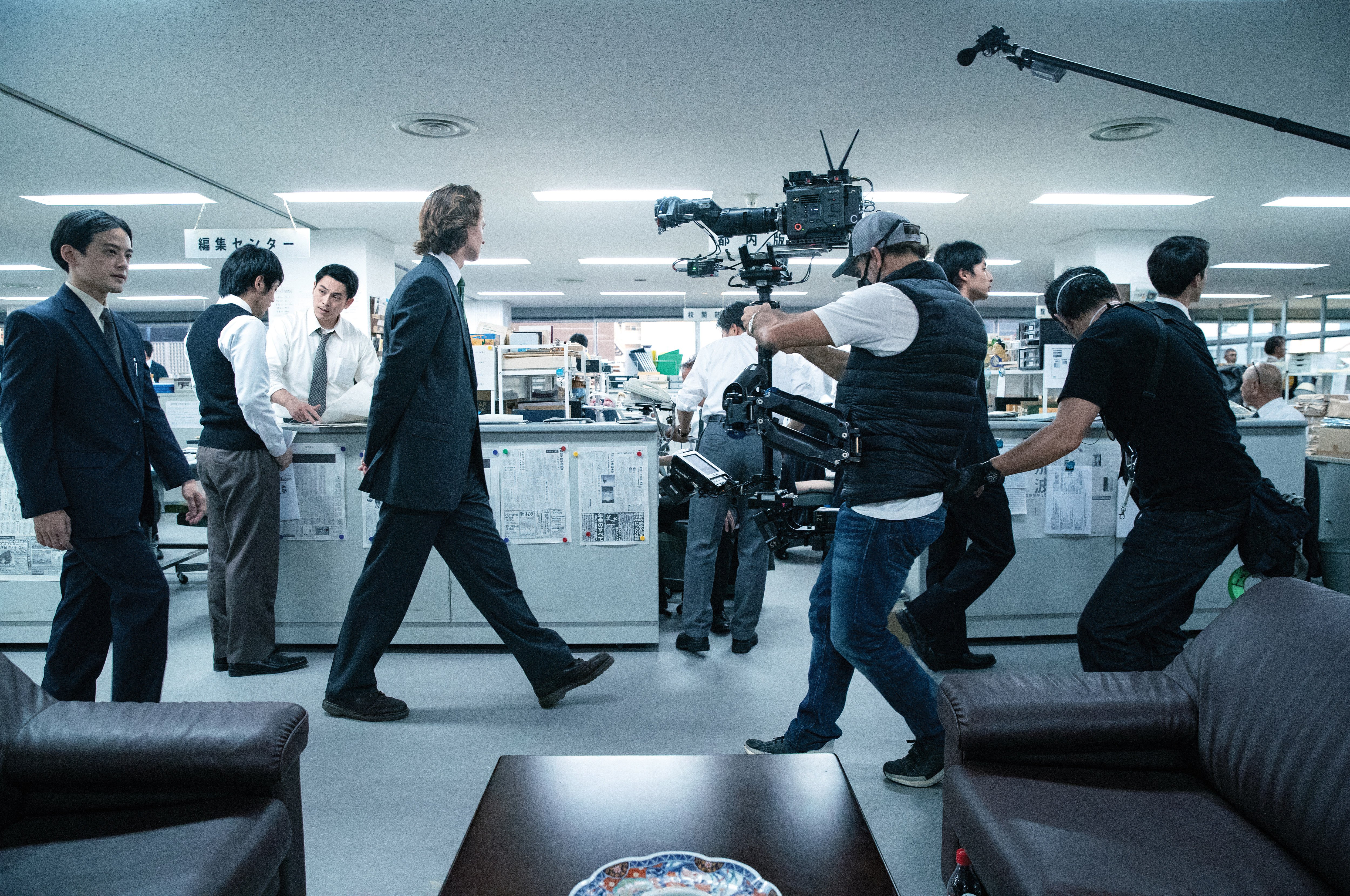
Mann adds, “The kineticism John’s talking about is that we put our audience in [Jake’s] shoes and see through [his] eyes as much as possible. The first time he walks into his dream-come-true of the newsroom, it’s busy and chaotic. [The other characters] are looking at all of the multiplex reactions that he’s having, and you’re seeing both his face and the environment that he’s entered for the very first time.”
Grillo has worked with Mann for more than 20 years, beginning as a camera assistant, moving up to operator, and then advancing to the rank of cinematographer for him on the Tokyo Vice pilot after serving as a director of photography on numerous projects for other filmmakers. Experience taught him he needed to be at the top of his game. “The task of shooting a Michael Mann project involves a lot of preparation and understanding of his methods — and his methods can be quite unorthodox. I think he only sleeps like four hours a night, because the amount of work he puts in is incredible. At the same time, when we’re on set, it feels like we're improvising. There’s a documentary aspect to the way he executes. He wants it to feel real.”
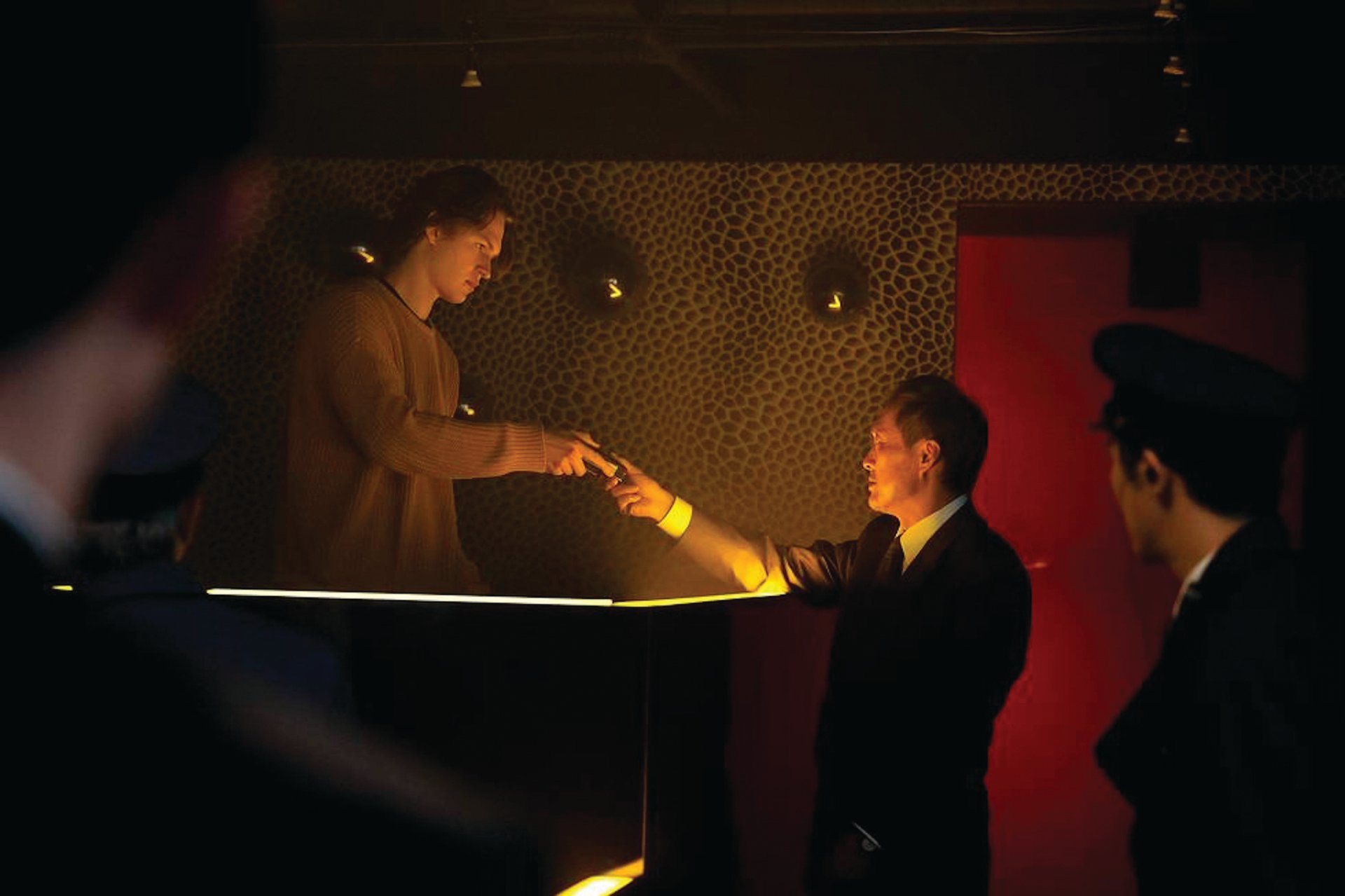
The Skater Scope, a periscope lens system, helped Grillo achieve Mann’s vision. “Because the lens is so far away from the body and the sensor, the movement is more kinetic,” Grillo says, while noting that the system presents some challenges. “This device sucks up a lot of light. In technical terms, it’s a 5.6, and Michael likes to use it in the most unusual situations, such as night exteriors and interiors.”
To help facilitate shooting in those dark places, Grillo chose the Sony Venice camera. Its ISO setting of 2,500 gave him latitude to use the Skater Scope in all kinds of situations, including about 30 to 40 percent of the pilot.
The other accessory that made Venice attractive was its Rialto Extension System, which can separate the lens/sensor block from the processing and recording system via a tether to create an extremely compact camera. On Tokyo Vice, the processing/recording portion of the camera could be stashed in a backpack while the operator, Roberto De Angelis, moved around holding just the small sensor block and lens to get very close to the actors’ faces, or capture extremely low angles before moving into more standard perspectives. “[The Rialto] allows you the freedom to go from a low angle to an eye-level shot,” Grillo says. “There’s a shot at the beginning of the pilot when Jake and [police detective Hiroto Katagiri, played by Ken Watanabe] enter a penthouse room to talk with members of the Yakuza. As Ken is walking in, we start low and come up to his face. That’s a good example of the Rialto at work. It’s a real bonus that allows you to maintain the same picture quality with all the benefits of the Venice — the frame rates, sensor and high ISO — while also converting to a very small, lightweight device.”
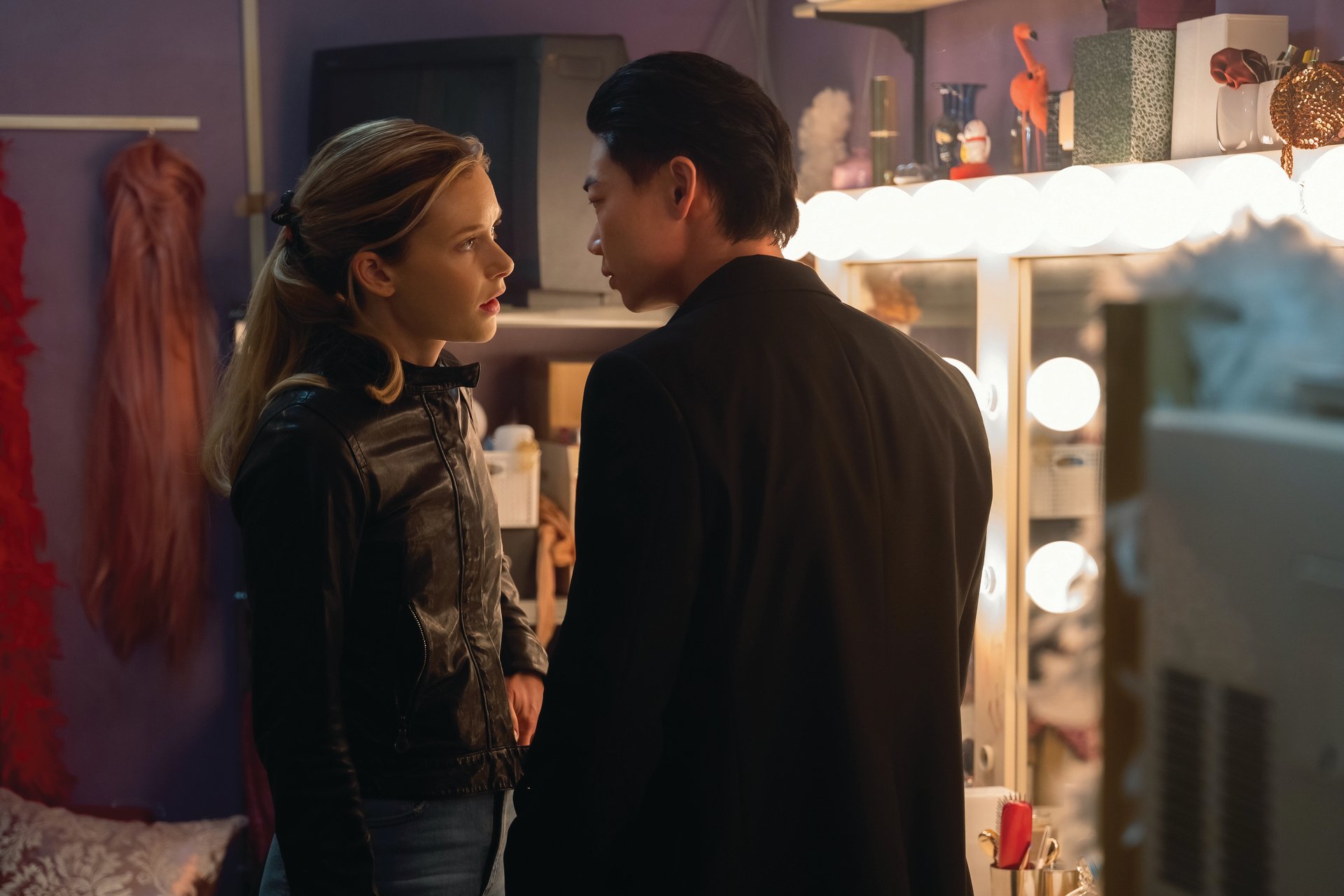
Since Mann preferred to shoot on location rather than on studio sets, Grillo deployed small Astera tubes that could be controlled wirelessly to light the scenes. “I could hide lights that were off-camera and allow Michael the freedom to shoot 360 degrees. I would throw lights on the ground or wherever I could to light a scene.
“The scene with the Yakuza in the penthouse was problematic in that we had a shot that brought the characters in the door and panned 200 degrees around the set to the lounge area, where they start their conversation. So, I had to have the whole set lit for a three-page scene with giant glass windows at night. I had small fixtures rigged above the main Yakuza character to give him a hard toplight, and I hid those with black cardboard so they wouldn’t be seen in a reflection. I also had Astera tubes on the floor to light Ken, and those were carefully placed so the camera operator, Roberto [De Angelis], could walk between them. When I was working [as 1st AC] for [Emmanuel Lubezki, ASC, AMC] on Ali [AC, Nov. 2001], I saw Chivo do something similar in a situation where he placed PAR cans on the floor aimed at the ceiling. One of the benefits of working with the masters is that you pick up these little tricks!”
Grillo’s facility with lighting and color contributed to the portrait Mann wanted to paint of a gritty, shadowy Tokyo. Mann elaborates, “We had very specific zones of light designed for when somebody was moving through and then out of an area. It was a very expressionistic use of light in a pretty strong contrast range. [In the] very opening scene, when Jake sits down and is talking to the Yakuza, the way [actor Kazuya Tanabe, as Yakuza henchman Yabuki] is lit, it’s chiaroscuro lighting in a contemporary mode. That’s what John did — and I think he’s great at it.”
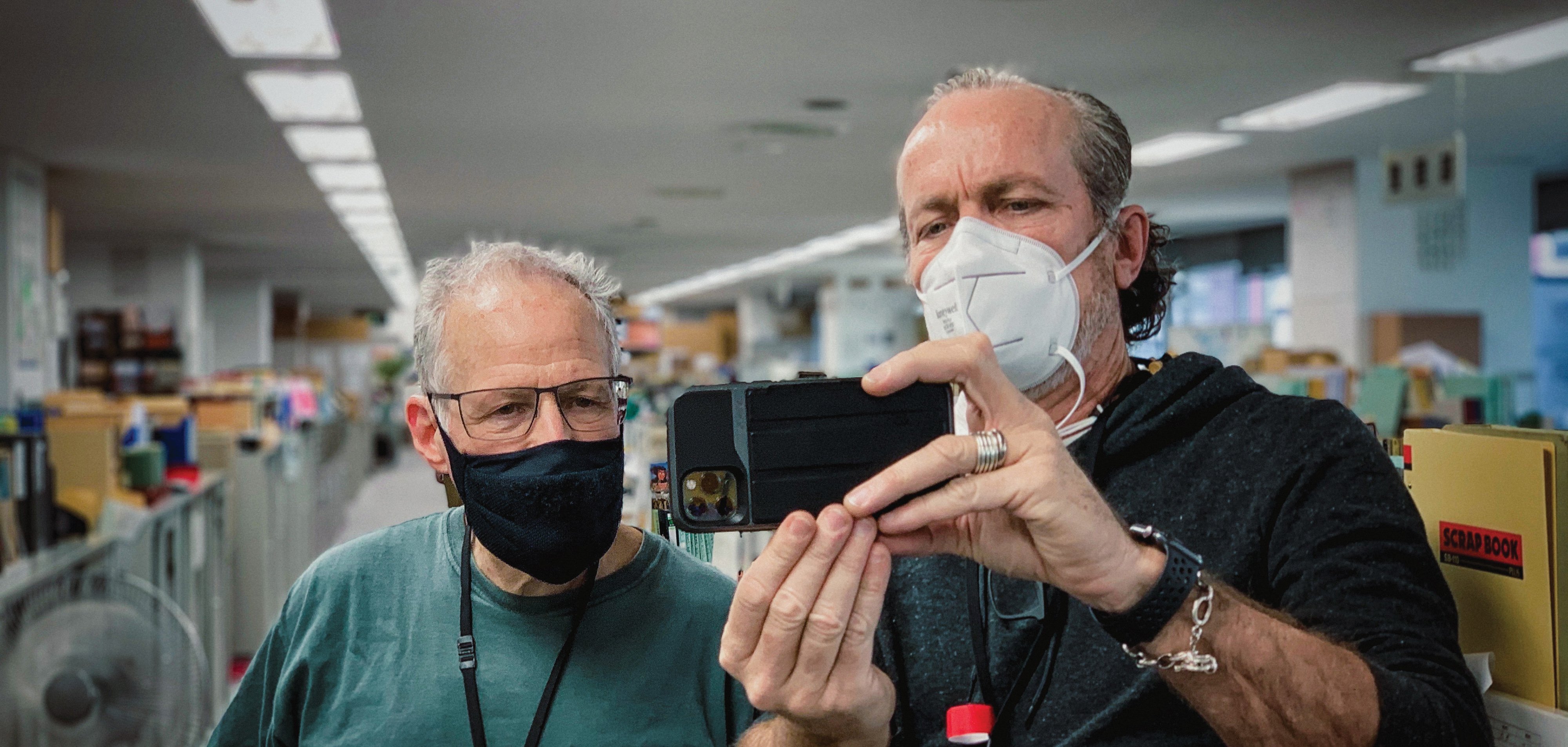
To read the full interview with Michael Mann, check out Shaping Light for Tokyo Vice.
Tech Specs: Tokyo Vice
2:1
Cameras | Sony Venice
Lenses | Sigma Cine prime (standard and uncoated); Angenieux EZ1, EZ2 (with FF rear optical block); Zeiss Compact CZ2 zoom; Panavision Primo zoom.
The Gilded Age | Wealth and Change
By Max Weinstein
Seymour Joseph Guy, Frederick Childe Hassam, John Singer Sargent.
The cinematography lookbook for creator-writer Julian Fellowes’ HBO series The Gilded Age begins with a gallery of paintings from masters of American romanticism, impressionism, and portraiture. For cinematographer Vanja Černjul, ASC, HFS, the artists’ iconography served as a touchstone for this sumptuously stylized historical drama.
Fellowes is best known for his work on the award-winning juggernaut British costume drama Downton Abbey, and his latest venture explores his pet themes of generational wealth and social change — but in the United States, specifically 1880s New York City. “At the heart of the story are two different social environments: One is the traditionalist ‘old New York,’ and the other is the industrial class that began dominating wealthy social circles in the late 19th century,” Černjul says. Tasked with shooting the show’s feature-length first episode, the cinematographer spent much of his prep time “looking for ways to distinguish and process those two worlds.” And in those 1800s paintings, he found the feeling that fit his “old-money” milieu — a rigid formality to cast against the fast and flamboyant life of the nouveau riche.
Černjul says the series’ style starts with its script, but his key crewmembers helped him hone its opulent aesthetic. Cinematographer Manuel Billeter, who shot the other four episodes of the series, joined Černjul during the early days of prep. Together, they assembled selected artworks for reference, conducted lighting and lens tests, and co-signed on decisions that shaped the show’s visual language.
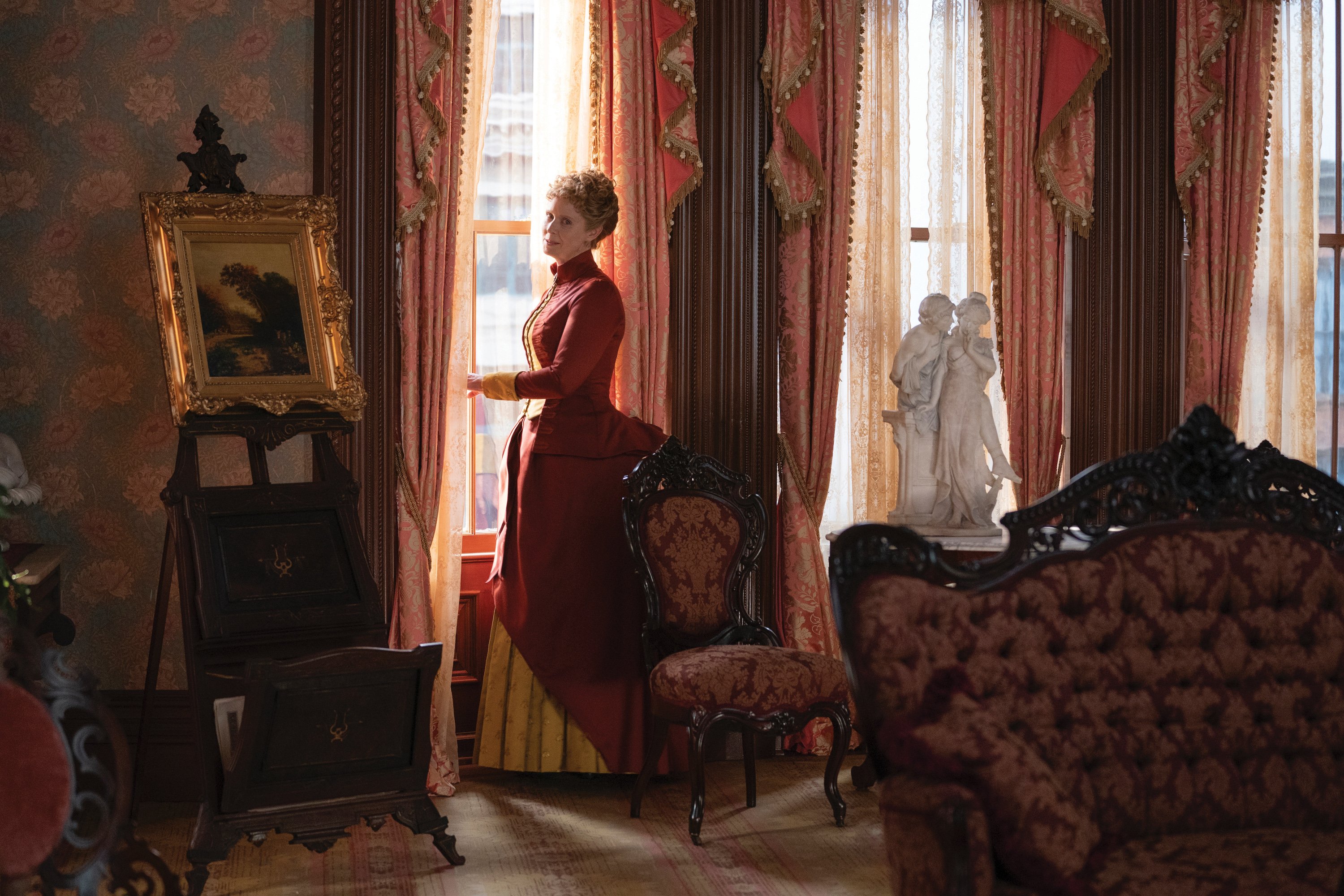
“When you’re creating the look of a series, you’re aiming for something that other directors and cinematographers can replicate when they inevitably take it over from you,” Černjul says. “It was important to me that Manuel embrace as many of my choices as possible.”
Černjul and Billeter settled on two optical systems through which they would filter their tale of two New Yorks. For “old” New York — which included the residences of the traditional elite — they chose Cooke Anamorphic/i prime lenses, to capture “that little bit of nostalgia and romantic feel that’s created by anamorphic bokehs and how depth of field works in anamorphic systems,” Černjul says.
For “new” New York — which included the residences of the up-and-coming wealthy class and the Black upper class — they used Cooke S7/i spherical lenses, to imbue a look that was “more modern and cleaner, with less distortion,” he notes.
In both cases, the optics were paired with Panasonic VariCam Pure cameras.
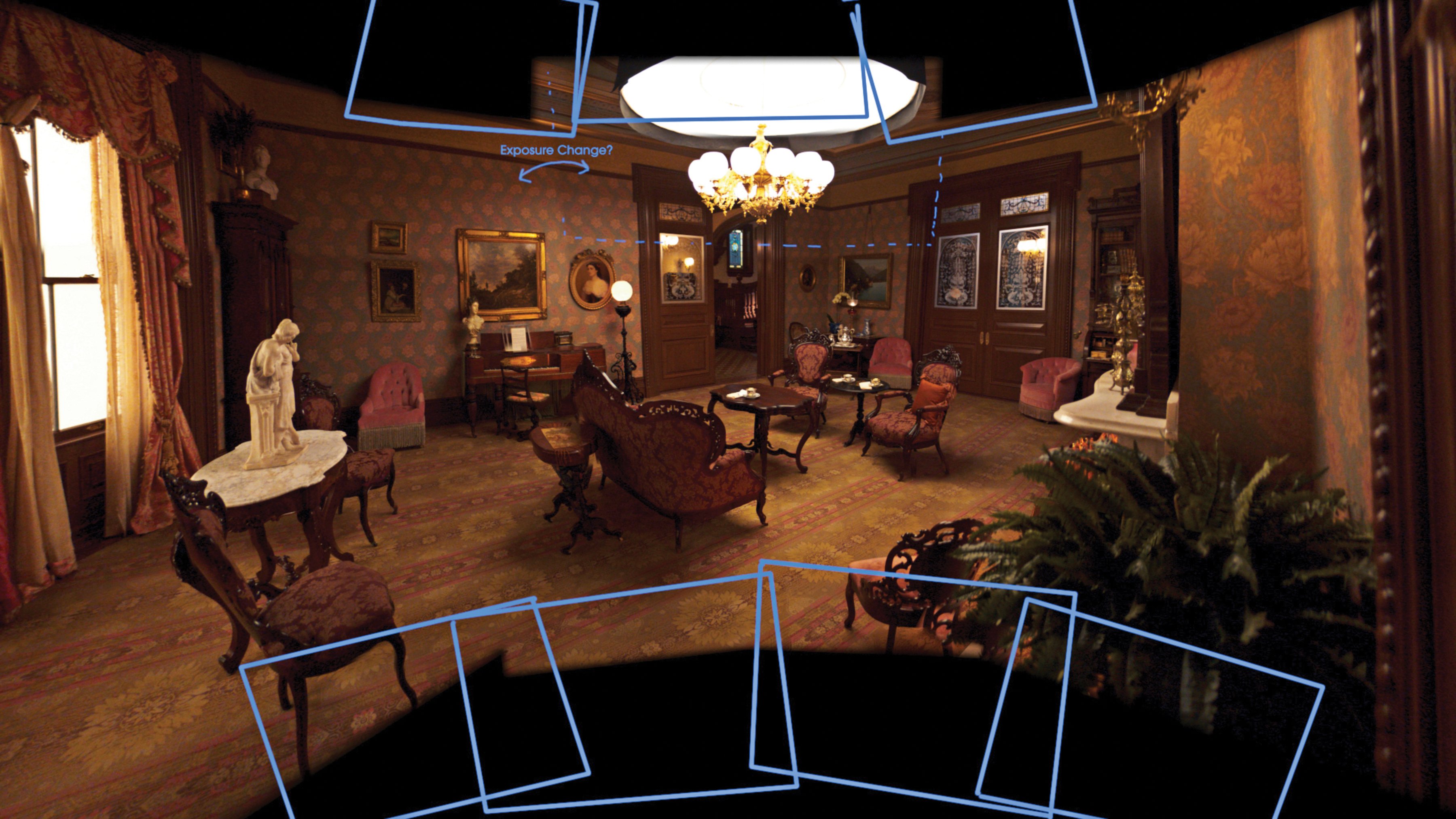
Other ideas from the cinematographer’s lookbook were tested during the first week of prep, but abandoned when proved impractical. For instance, when shooting the downstairs of the old-money mansions, Černjul and Billeter had intended to employ slightly longer lenses than those used for the upstairs, hoping to frame working-class characters extra tight as they bustled about the kitchen. But Černjul says that rule needlessly restricted their camera moves through the space.
“You come with all these ideas, but after you test them, you have to let the reality of your locations tell you about what the show is,” Černjul says. “You can’t just force the style upon it.”
Černjul also learned to let costume designer Kasia Walicka-Maimone’s work guide some of his lighting choices. “Some costumes are three-dimensional and have a lot of detail that only comes alive with some hard light from the side,” he says. “This was something I’ve never done before: having a specific light that’s there just for a costume.”
One dress, which is worn in the pilot by old-guard socialite Agnes van Rhijn (Christine Baranski), is deep blue and adorned with black “jet” beads that glisten through the shadows of her upper Fifth Avenue townhouse. To bring out its subtle sparkle, Černjul lit the outfit with one Arri L7-C LED Fresnel, positioning it off to the side of Baranski and just in front of the upper-body portion of the dress.
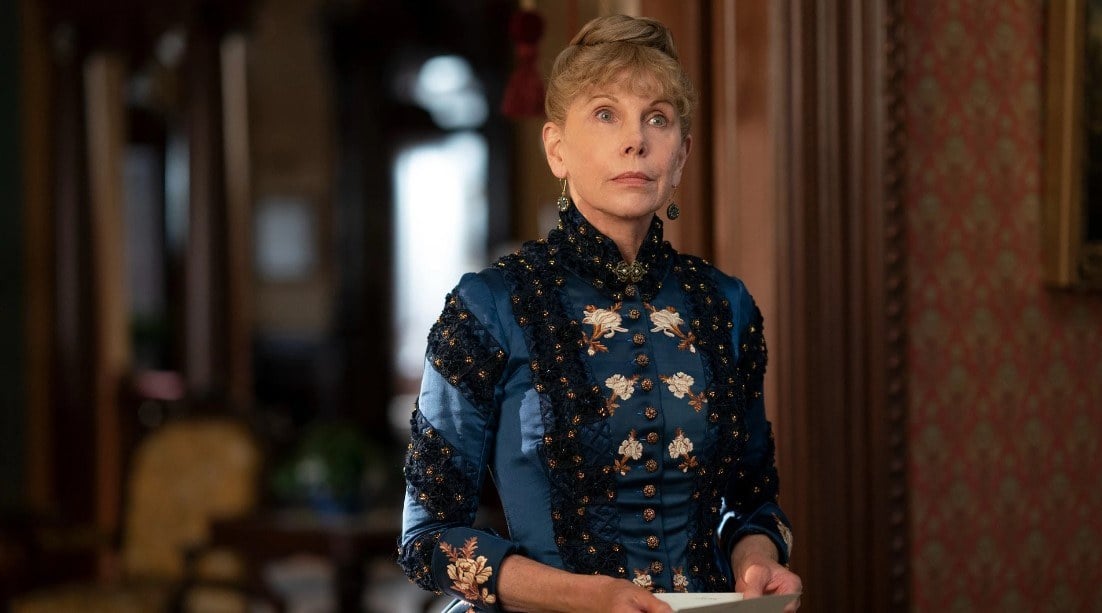
“This hard sidelight would enhance the luster in the silk and bring out the glittering detail in the dress,” Černjul says. “We couldn’t follow the characters with this specialty light, of course, so we used it when the characters were stationary — or sometimes they would walk in and out of it, if the blocking allowed it. The Arri L7-C was helpful in quickly fine-tuning the color and output to organically merge it in, and make it ‘invisible.’”
Černjul stresses that for every costume that appears throughout the first season, the rule remained the same: “The light should blend the costumes into their surroundings. Ideally, the audience doesn’t notice what you’re doing.”
One of Černjul’s more innovative techniques — a tiled and stitched super-wide he calls a “master panorama” — was used numerous times throughout the first season, after it was initially employed in the pilot to depict interiors of the grand, newly built mansion of Bertha and George Russell (Carrie Coon and Morgan Spector).
The cinematographer conceived of this signature shot during location scouting when he toured the mansions of Manhattan and Newport, R.I., which later served as filming sites.
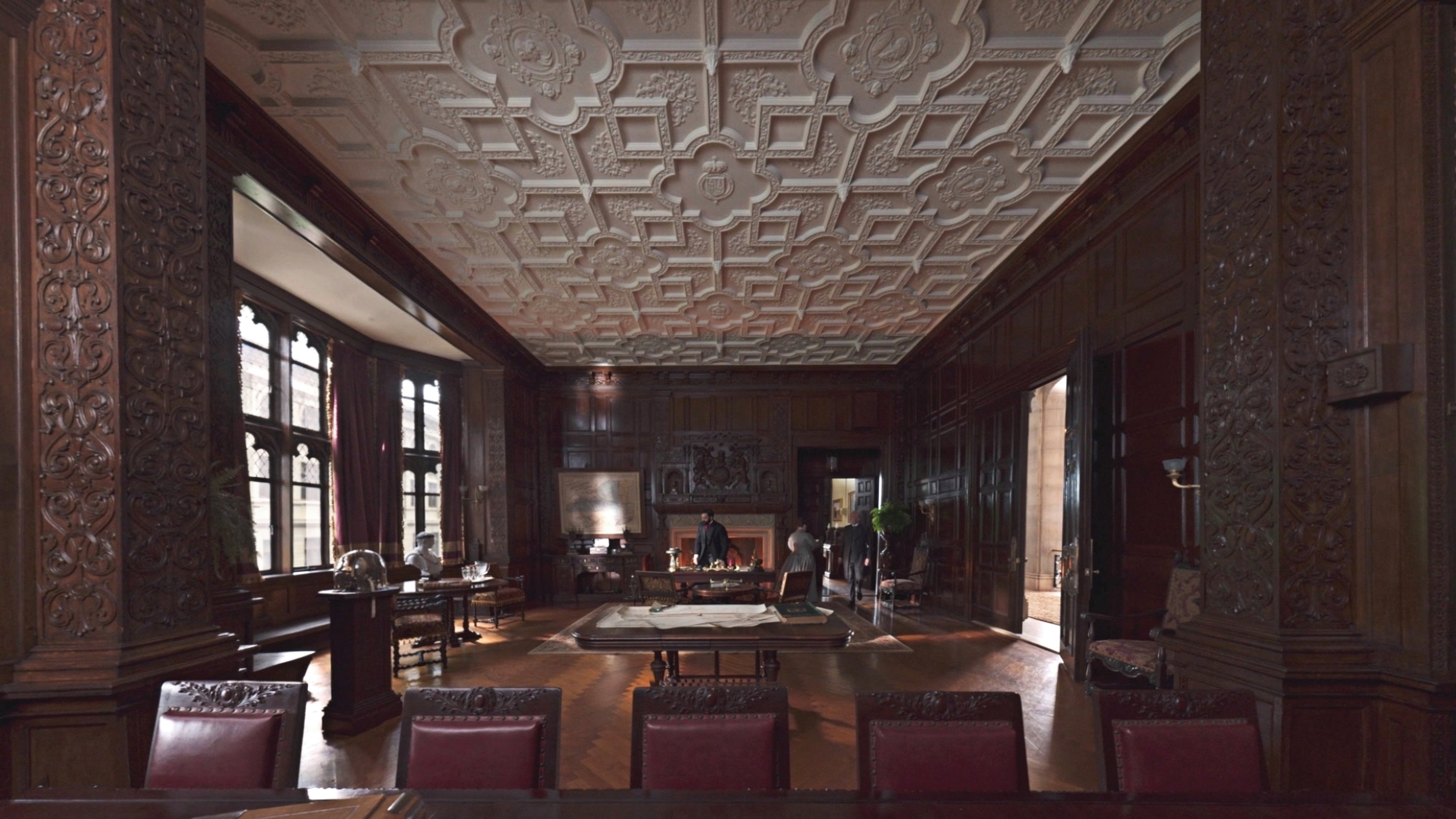
“Whenever we entered a new room, I noticed that everybody would look up at the magnificent ceilings and turn around 360 degrees, just to take in the space,” Černjul recalls. “It was funny — everybody had that same reaction. I thought, ‘How do we capture that feeling of being inside these spaces for the first time?’”
The crew’s romantic art referents provided their answer for this quandary as well. “The compositions in those paintings showed us how to frame people in these amazing salons and drawing rooms, and how to be mindful of the geometry and verticals of those rooms,” Černjul says.
They decided to avoid ultra-wide lenses at all costs — wary of the geometric distortion inherent in this type of glass that would affect the appearance of the architecture in-frame. Černjul proposed a new process to director Michael Engler: He’d shoot multiple tiles around one meticulously blocked “master shot,” then work with the VFX team to marry them together in one massive mosaic. (It was key that the actors not cross the frameline within the master shot, so the tiles would be independent of the performances.) “Michael loved the results,” the cinematographer says, “so we were excited to use it again whenever we would introduce a new set. We ultimately shot one for each of our sets, and they are spread out throughout the series.”
The technique continued to pay dividends in Episode 2 (“Money Isn’t Everything”), for a scene in which a master panorama shows off Russell’s billiards room for the first time — where the railroad tycoon attempts to bribe city alderman Patrick Morris (Michel Gill) during a game of pool.
“When we put the shot together, we wanted to see the whole room — all of the ceiling and floor, but we still had to light it from somewhere,” Černjul says. “We shot the scene in the Breakers mansion [in Newport], which is basically a museum, so the only way to light it was with balloons that were close to the ceiling. First, we filmed the master shot with our actors. Then, after we shot all the other tiles, we’d move the balloons from the ceiling to the floor. The key was to remove our equipment from each tile without changing the lighting of the whole room, and we became very efficient in how we did that.”
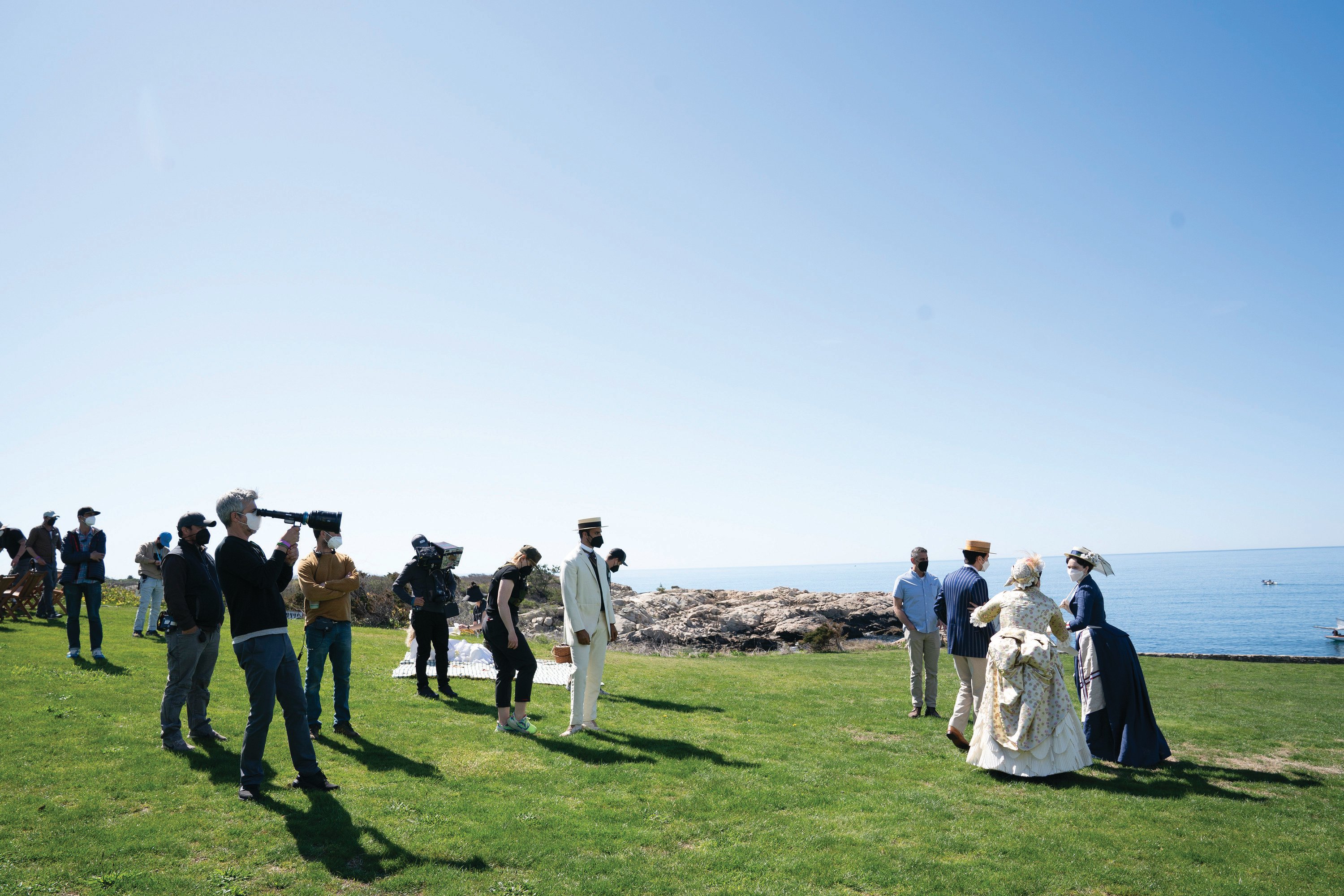
In most of the paintings the crew studied, the windows of Gilded Age mansions are heavily dressed with lace, sheers and other materials. Capturing those details required some reverse engineering because the windows would burn out when hit with hard light, making their highlights difficult to preserve.
“I would start by turning [off] all the interior lights — keeping on only the lights from outside, to hit the sheers,” Černjul says. “That way, we could determine the maximum brightness of the window dressing without burning it out, and understand how much of the [incoming exterior] light is left available inside. We would then balance all the lighting ratios inside the room accordingly. This workflow allowed us to preserve the details in the highlights and use the windows as sources as much as possible. We brought back the detail in the window dressing in the final grading.”
“The style of The Gilded Age is still evolving,” Černjul says. “I’m proud of the choices we made that survived the pilot, but other ideas will keep being slowly introduced. And going forward, we know exactly what to pay attention to.”
Tech Specs: The Gilded Age
1.78:1
Cameras | Panasonic VariCam Pure
Lenses | Cooke Anamorphic /i, S7/i
Slow Horses | Confounding Expectations
By Sarah Fensom
Danny Cohen, BSC refers to the myriad tonal twists of the Slow Horses pilot episode as “wrong-footing” the audience. “Right from the first scene in the airport, you think this is going to be a by-the-numbers action-type show — a thriller,” he says. “But then it just turns on its head, and it becomes more about these absolutely hopeless downtrodden spies who are complete rubbish at what they do. Then it turns on its head again.”
Cohen — who shot the full six-episode inaugural season of the new Apple TV Plus series, which is based on a Mick Herron spy novel — helped ensure that the pilot began at a fever pitch: River Cartwright (Jack Lowden), a young British agent, is tailing a suspect through London’s Stansted Airport as MI5’s top brass, a stony Diana Taverner (Kristin Scott Thomas), oversees the tense scenario. As the action escalates, the mission unravels— and at the end of the nearly 10-minute sequence, the outcome is explosively bad.
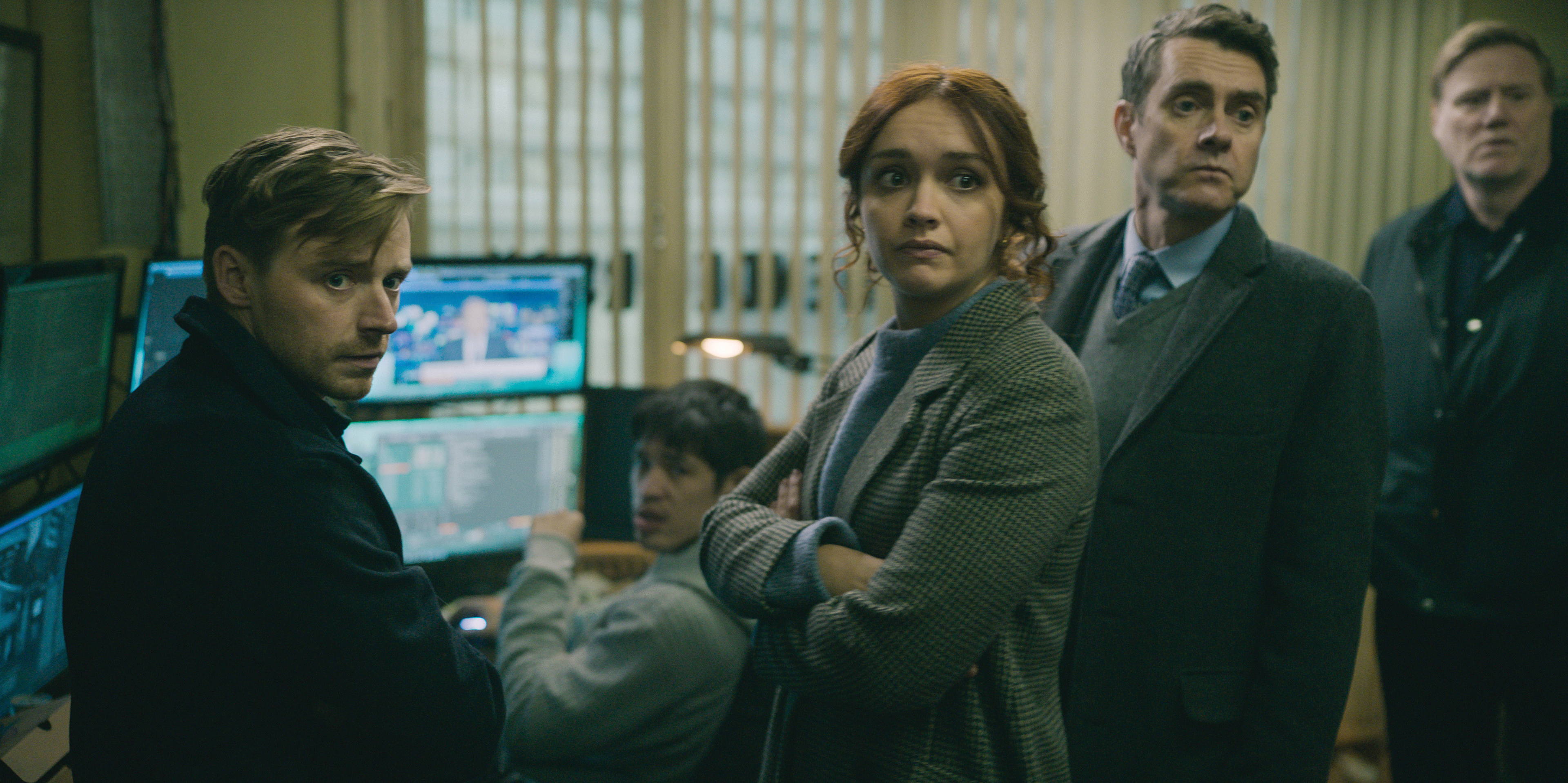
Olivia Cooke, Paul Higgins and Steven Waddington
portray failed agents relegated to MI5’s “Slough House.”
Where Cartwright ends up after the bungled mission, though, has a starkly different pace. The failed operative is banished to Slough House, the shabby satellite office of MI5, where outcasts of the British intelligence agency go to stare at peeling paint and perform perfunctory tasks. There, a surly Jackson Lamb (Gary Oldman) lords over the disgraced agents, hurling insults and grumbling his way through bottles of brown liquor. Though certainly an outsider to the agency’s state-of-the-art offices in Regent’s Park, Lamb maintains a shadowy connection to Taverner and the internal intel at British Intelligence.
Part of what makes the pilot compelling, both visually and dramatically, is its series of surprising contrasts: action vs. idleness; Slough House’s ramshackle feel vs. Regent Park’s pristine ambience; Tavena’s refinement to Lamb’s insouciance.

Cohen, whose filmography is crowded with acclaimed work on features and TV series (including The King’s Speech and Les Misérables), worked with director James Hawes on every episode of Slow Horses. Keeping a sense of visual cohesiveness throughout the pilot, while also establishing a unique look for the episode’s major settings, were main objectives for the collaborators. And though the show diverges largely from the globetrotting action of James Bond-style spy fare, the director and cinematographer did find inspiration in classic espionage films such as The Third Man (1949) and The Spy Who Came In From the Cold (1965). “I think what we took from these types of spy films was more the atmosphere and mood, rather than specific shot ideas. One other film we used as a reference was [the 1985 feature] Defense of the Realm, shot by Roger Deakins [ASC, BSC]. It’s a fantastic thriller about intrigue and double-crossing. It has a great look and a real sense of time and place.”
Production on the series took place from November 2020-May 2021, squarely amid the Covid-19 pandemic. Cohen notes that when it came time to shoot the opening action sequence in Stansted, the airport — which normally has “70,000 people going through — now contained about 700 people. It was a ghost town.” The vacant setting became a “playground,” he adds, with airport authorities parking planes just for the production. “If it had been a working airport, we never could have had an actor driving a car really fast next to airplanes.”
“On the bigger, actiony stuff, we’d probably have three or four cameras — Arri Alexa Mini LFs paired with Panavision Panaspeed lenses,” the cinematographer says, adding that he switched mostly to using two cameras for the rest of the pilot. “We shot the series with that [camera and lens] combination. The only other lenses we used were the [Panavision 70] zooms — 28-80mm, 70-185mm and 200-400mm. We also used Sony HXR-NX80 4K and a7S II cameras for the CCTV footage.
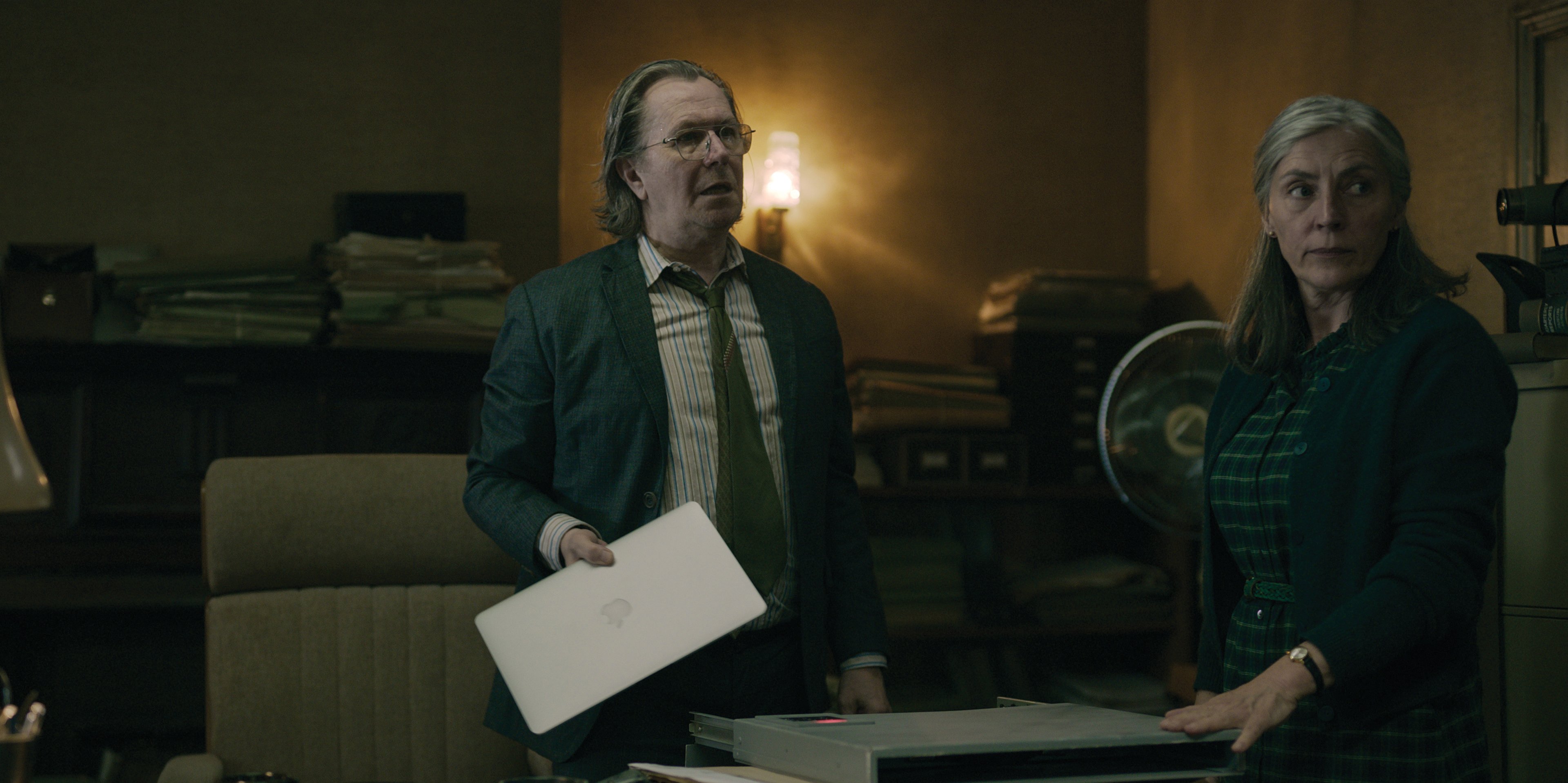
with colleague Catherine Standish (Saskia Reeves).
“The Alexa Mini LF has a slightly softer look than other cameras, which I like,” he continues. “It meant we didn’t use diffusion filters at all, which helps at night as they can sometimes do weird things to highlights. The Panaspeeds worked well, as they cover the large-format sensor, they’re fast lenses, and they have a bit of contrast, which I like as well.”
In the airport, Cohen relied primarily on the fluorescent tubes in the building and natural daylight coming through the windows, with “a few Arri SkyPanels here and there,” he says.
The exterior of Slough House is a real building on Aldersgate Street in London, but the interior offices were constructed as a set. There, Cohen needed a lighting setup that could be easily adapted to different needs. “We had to create lighting that was ‘neutral’ for the day interiors, because we’d be jumping outside to shoot characters walking in or out,” he notes. “Because the schedule was impacted by Covid, we sometimes did the stage work before the exterior shots, which meant taking a punt on what the exterior light would look like on specific scenes. The neutral look was mainly [to avoid having] hard sun coming through the windows, as I felt that it would be a big jump if, when we shot the exteriors, it didn’t match. Having slightly flatter/cloudy light would mean the eye wasn’t drawn to the windows and [wouldn’t register] a mismatch if it ended up being very sunny in the real world. The night work, [in regard to] interior and exterior, was simpler, so shooting it whichever way ’round wasn’t a problem. To achieve the variety of tones he desired, Cohen used a mix of practical lighting and LiteGear LiteMats, all programmed into the same dimmer board.
Whenever Oldman was on camera, Cohen explains, the idea was to make him look as worn out and defunct as possible. “Typically, with movie stars, the directive is to make them look fantastic — but here, we were trying to make Gary look like a farting old man who’s falling apart.”
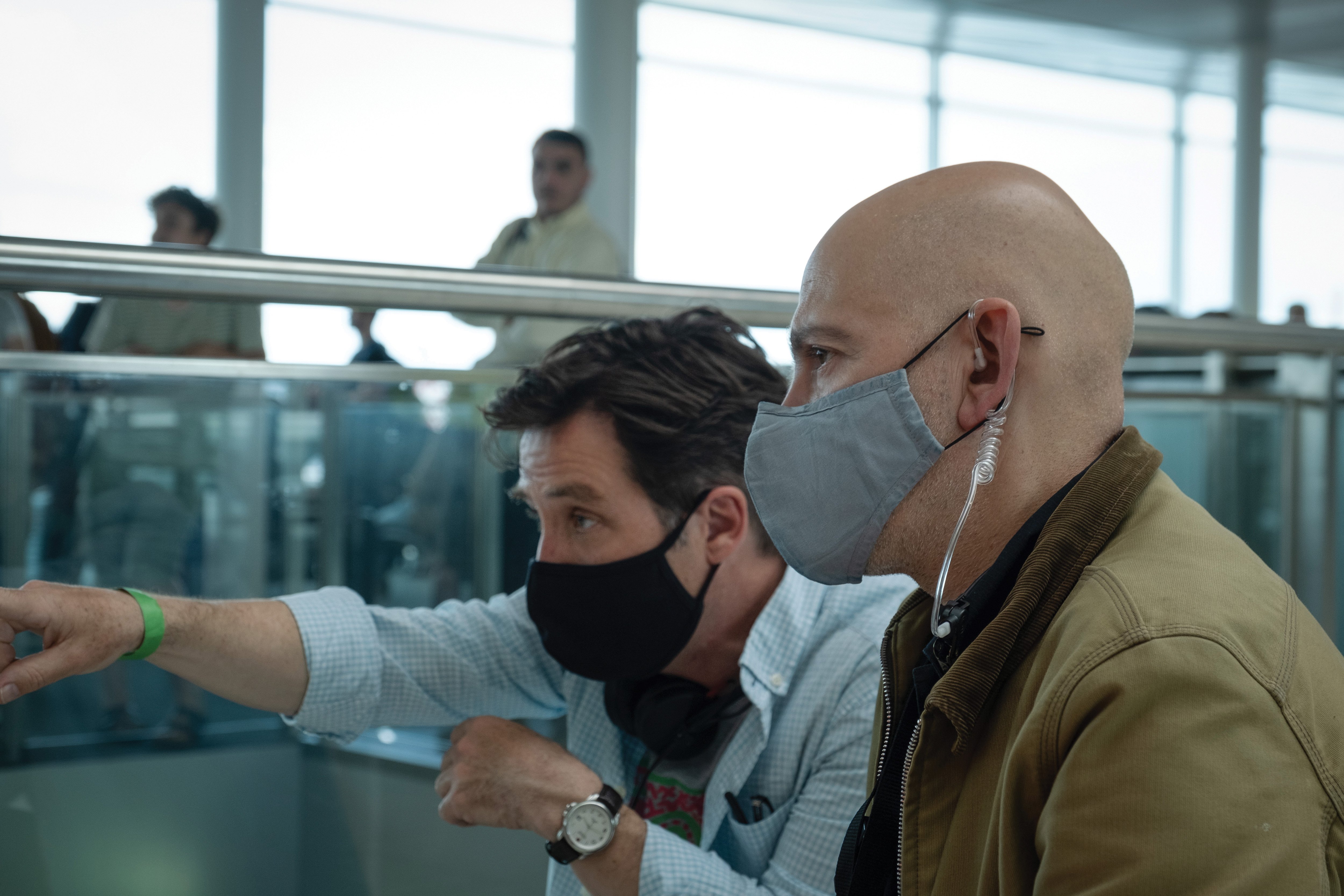
director James Hawes plan a shot at the airport.
With Scott Thomas, the aesthetic objective required the opposite approach. “The whole point was to make her look amazing in contrast to Gary,” he notes. The cinematographer again relied primarily on the practical lights built into the set — Regent’s Park, in this case — with the addition of small LiteMats, “just to put something in her eyes. And bigger, softer supplemental sources worked well to achieve a different look for her — OctoDomes or 2Ks bounced off bedsheets.”
Throughout the pilot, Cohen employed a few key workarounds. For a scene where Cartwright visits the cozy home of his grandfather, the cinematographer charged Mark Holt Special Effects with creating a silent fire in the fireplace. “Fire creates a sound nightmare, so this company came up with a gas fire where you can control the intensity of the flames, but it's completely silent — so everything you get is usable,” Cohen says. And for a scene where all of Slough House’s employees are huddled together in a small office watching a computer monitor, Cohen cut holes in the walls of the set to shoot through. “I hate flying walls because it’s such a time killer. There were a couple of pictures hanging on the walls, so we just poked the camera through, to shoot above the computer screens, and got coverage that way.”
An ongoing visual theme throughout the pilot, whether in Slough House, Regent’s Park or on the street, is the obscuring of characters by windows or glass. Says Cohen: “One of Hawes’ keynote visual goals was to have double images, reflections, light reflecting on glass — anything that was kind of interrupting the viewer’s image.” Though Slow Horses is about the worst of spies, it is a spy thriller, after all, where nothing is as it first seems.
Tech Specs: Slow Horses
2:1
Cameras | Arri Alexa Mini LF
Lenses | Panavision Panaspeed, Panavision 70 zoom






